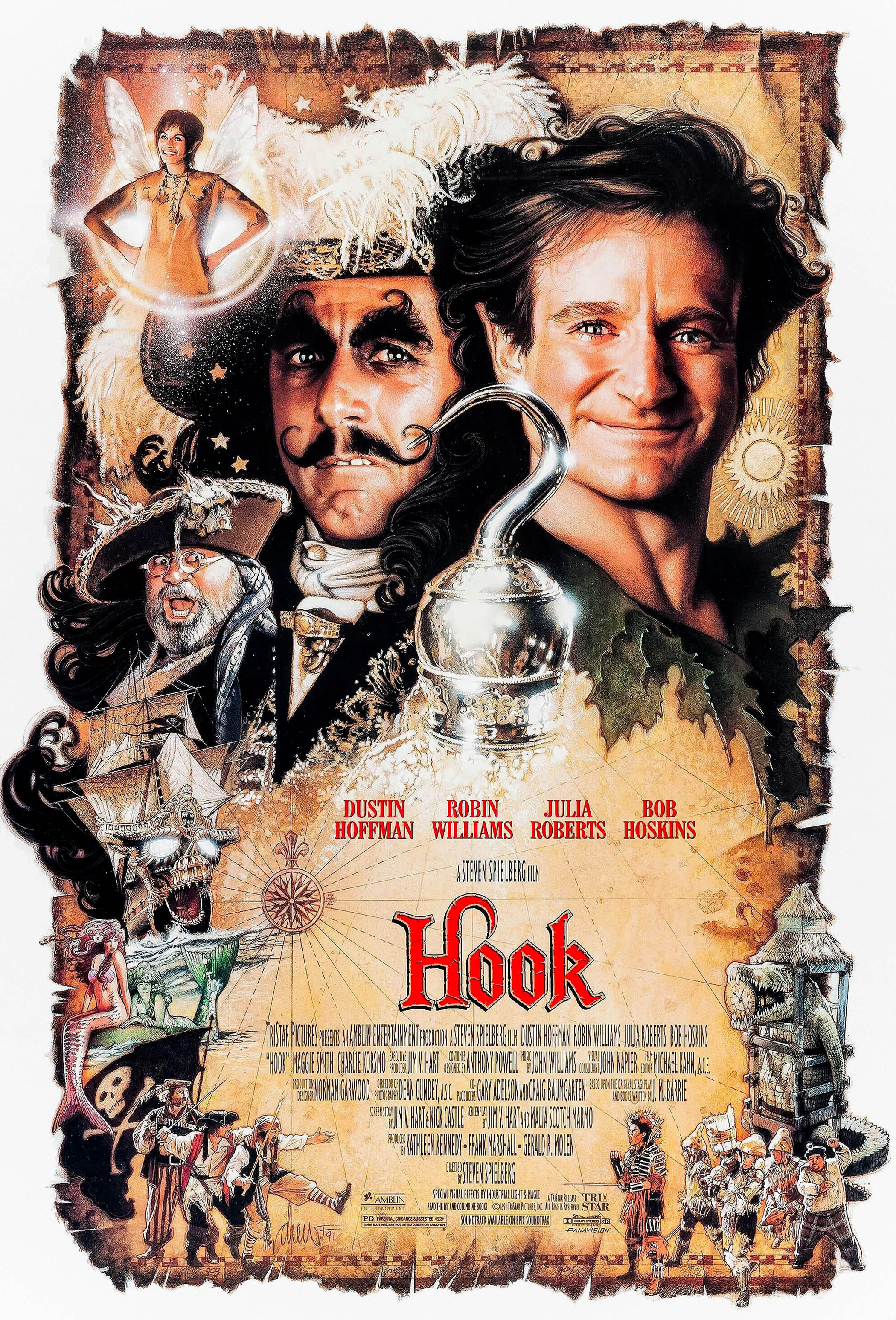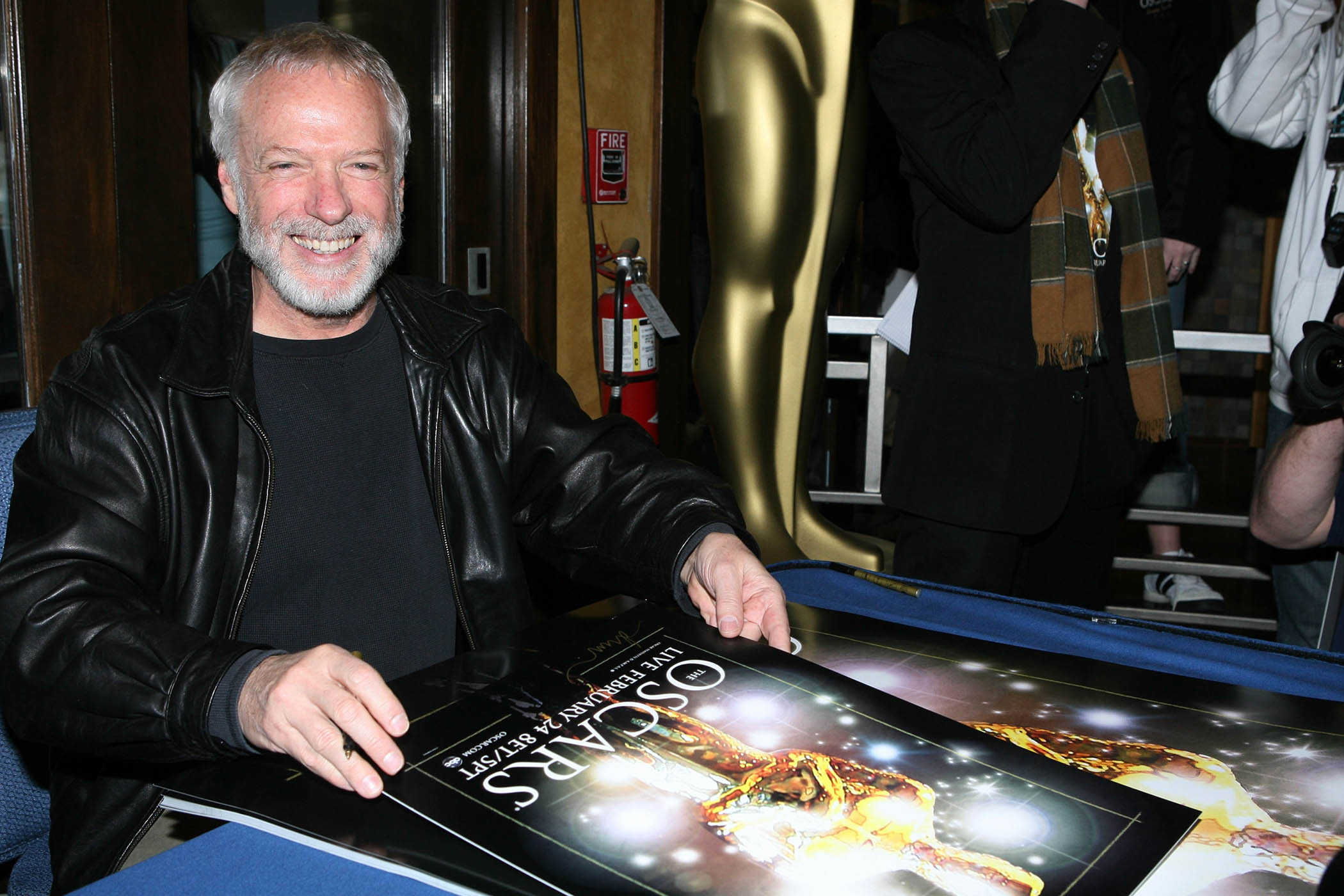When it came to selling a film in the 1980s, two ingredients almost guaranteed a hit: a score by John Williams that bounced around in the head, and a poster by Drew Struzan that young audiences would hang on their bedroom wall and study for hours. It was little wonder both of them worked regularly for two of the era’s most commercially successful directors: Steven Spielberg and George Lucas.
“My job is to capture the spirit of the movie,” Struzan said in 2014. “People will see it because they want to feel that emotion. It becomes iconic when they have that feeling every time they look at the poster.” He was compared to Norman Rockwell, whose paintings of everyday America stirred similarly warm sentiments. While Rockwell led the Saturday Evening Post, Struzan nudged people towards their Saturday matinee movie.
His trademark was the composite ensemble design, earning him repeat business for such series as Star Wars, Indiana Jones, the Muppets and Police Academy, as well as standalone family films such as ET, The Goonies and Hook. He was also trusted with the first Harry Potter poster: to reassure children that the casting honoured the characters in their heads. Spielberg, who called him “my favourite movie artist”, said: “I had to almost live up to the art that we later were going to ask Drew to create for the poster.”
One of his finest posters was for Indiana Jones and the Last Crusade, the third in Lucas’s series about the swashbuckling archaeologist. Above an action image of Indy stampeding out of the poster on horseback, pursued by Nazi tanks and planes, you have Sean Connery as his father looking with a mixture of pride and concern at the main portrait of his reckless son. Harrison Ford, who played Jones, said Struzan captured his likeness better than anyone. “He gave him [Jones] a nobility and a heroic character,” he said. “And frankly he made me look good, so I was a happy guy.”
Struzan also designed the posters for all three Back to the Future films, building on his concept for the original 1985 film by placing Christopher Lloyd and then Mary Steenburgen behind Michael J Fox’s main character as he looks at his watch beside a vanishing time machine. Struzan’s original concept had Fox holding the hands of a clock, like Harold Lloyd, but he settled on a more vivid design. “A DeLorean – transparent, disappearing, sexy!” he said. “Light streaking out, fire under the wheels. I want to see this movie!” And millions did: it was by far the most successful film at the box office that year.

Drew Struzan's poster for the 1991 film Hook, directed by Steven Spielberg and starring Robin Williams, Dustin Hoffman and Julia Roberts. Photograph by BFA / TriStar Pictures
Struzan was born in Oregon City in 1947 and raised in California. He claimed to have been able to draw before he could talk. When he was five, his parents invited researchers from Stanford University to see his art, much of which he had drawn on toilet paper because they had no money for materials. “Probably why I love drawing so much today is because it was just all I had at the time,” he said.
He studied at an art college in Los Angeles where a teacher told him he could either become a fine artist and paint what he wanted or work as an illustrator for money. “I need to eat,” Struzan replied, having already married his wife, Dylan, and had a son. Ironically, given his later career, he could seldom afford to go to the cinema but visited the library regularly and studied the old masters; El Greco, Rubens and Titian were favourites. “I learned not to copy as much as to be inspired,” he said.
After graduating, he took a job with a desiwgn studio, where he created album covers for up to $250 a time for such musicians as the Beach Boys, Bee Gees and Alice Cooper. In the 1970s he began to paint posters for B-movies but received a break when Charles White asked him to collaborate on a poster for Star Wars. White was happy to paint spaceships and robots but wanted someone else to do the humans. Their circus-style design, depicting a torn advertising poster on a wall, became a cult hit and was appreciated by Lucas, who offered Struzan more work.
He went from earning $5,000 a year to $50,000 a job, and throughout the 1980s completed up to 10 posters a year. He worked on a 1:1 scale, sketching his drawing on one piece of paper, then going over it with airbrushed paint, adding detail with pencils. Some of his most famous works were rush jobs – his poster for the 1982 horror film The Thing was done in 24 hours – while others would take weeks. “When the suits leave me alone I do my best work,” he said.
As tastes changed in the 1990s, he diversified his output, painting comic books, more than 30 US postage stamps and a set of Diana, Princess of Wales commemorative plates. He retired several times but was often tempted back, most recently for the How To Train Your Dragon films. His final years were marked by Alzheimer’s disease.
“Drew was an artist of the highest order,” Lucas said. “His illustrations fully captured the excitement, tone and spirit of each of my films his artwork represented. His creativity opened up a world full of life in vivid colour ... even at a glance.”
Drew Struzan, film poster artist, was born on 18 March 1947, and died on 13 October 2025, aged 78
Photograph by Alexandria Wyman/WireImage
